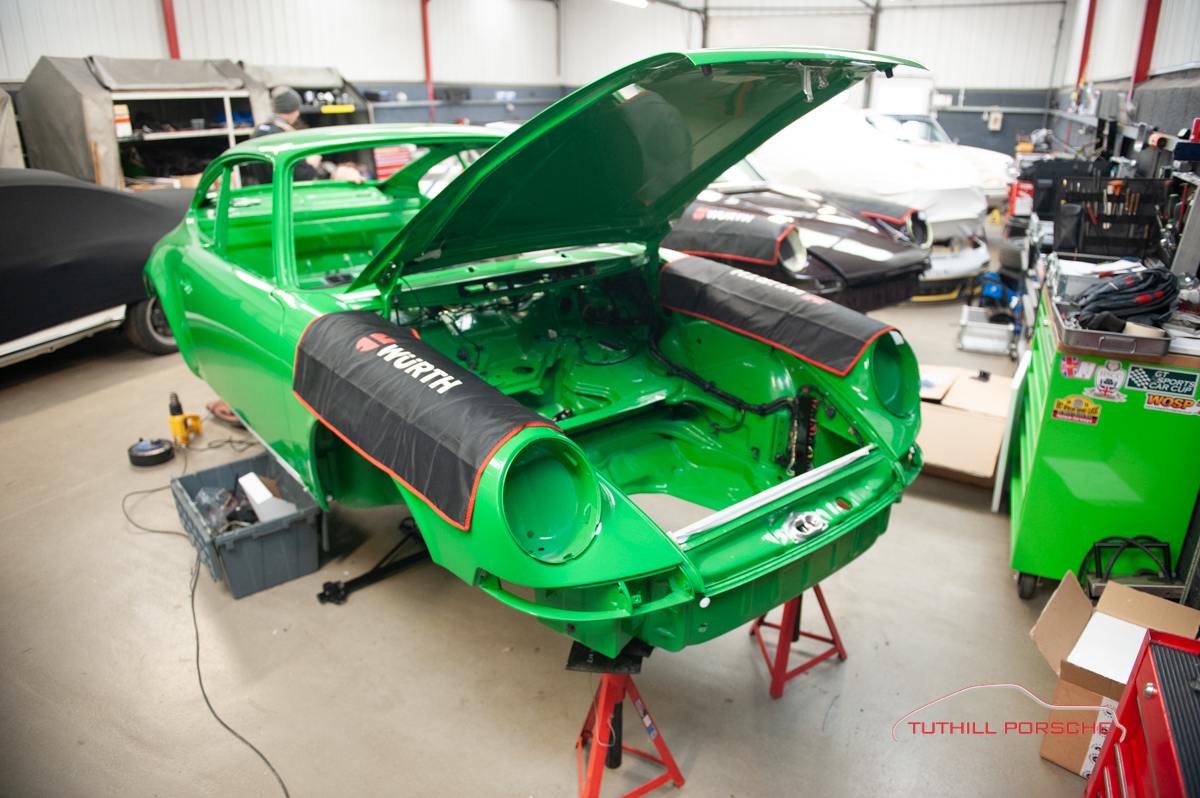
As we enter the final weeks of 2018, we’re looking back at twelve projects that have kept our team busy this year. Part 2 tells how a burnt-out Porsche 911 Carrera RS rose phoenix-like from the ashes of a California warehouse fire.
12 Builds of Christmas 2: 1973 Porsche 911 Carrera RS restoration
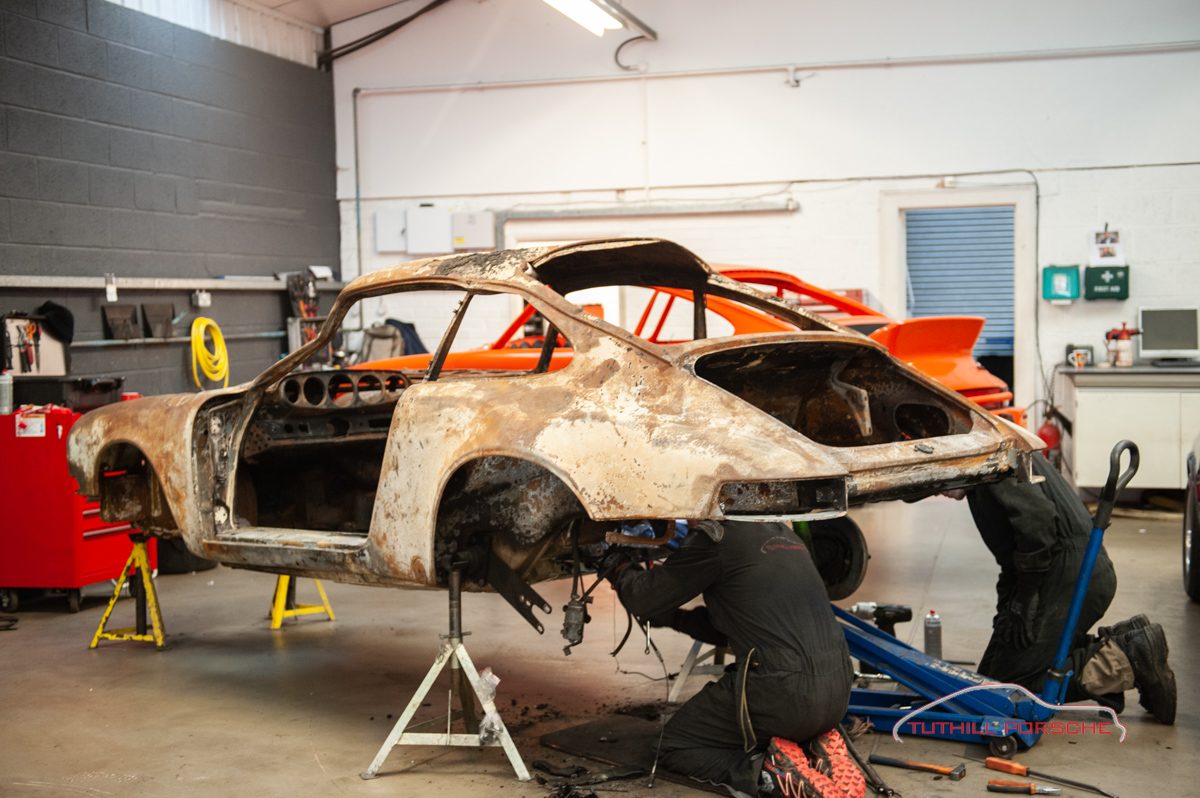
In 2014, a huge fire engulfed a famous California Porsche workshop. Many classics were lost in the blaze. Amongst the casualties was a 1973 911 Carrera RS: an original Viper Green example. The bodyshell had suffered distortion due to heat and the paint and trim was all but destroyed. The worst damage was above the waistline, caused by heat and flames blowing across the car rather than a fire engulfing the structure. Although the RS was damaged, it was definitely repairable.
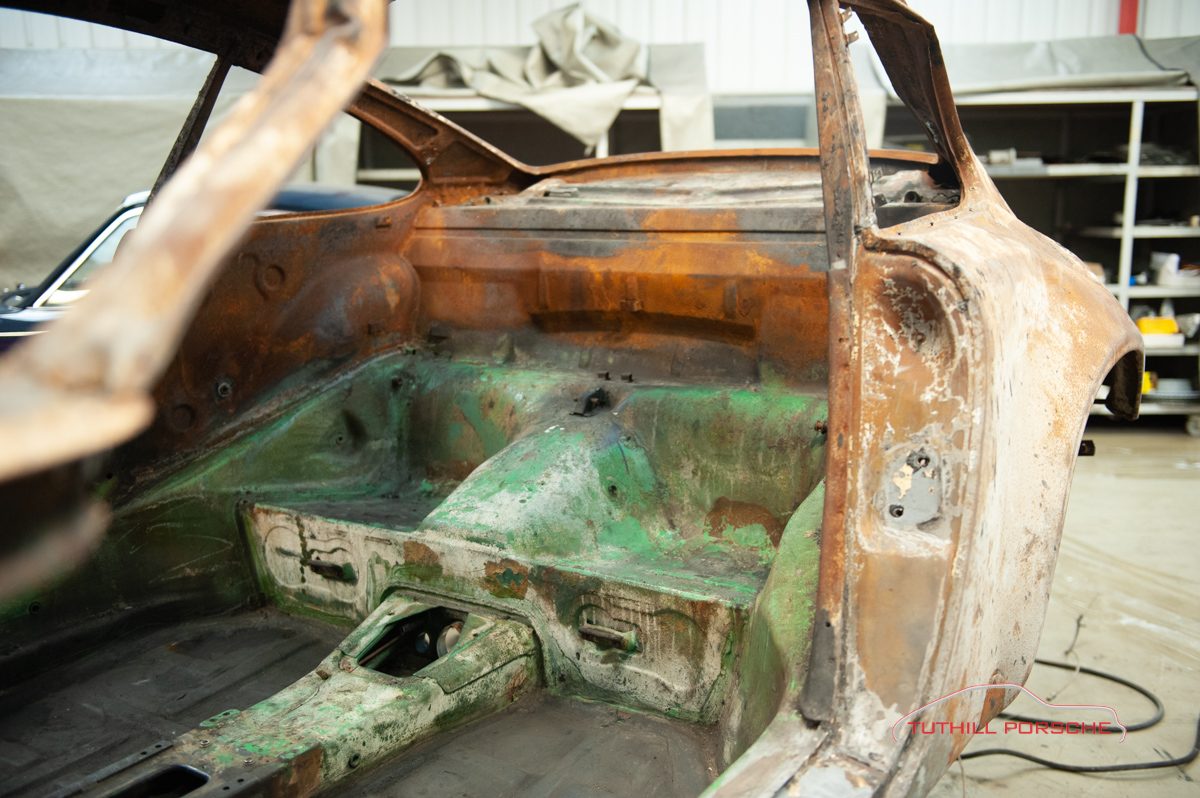
The first job was to dismantle the RS and put it on a rolling frame, so it could go for media blasting. The mechanics removed and set aside all the potentially salvageable parts for further inspection, before the shell was wheeled off for a clean up. Once that had been done, we put the shell on one of our Celette body jigs and measured the chassis for straightness.
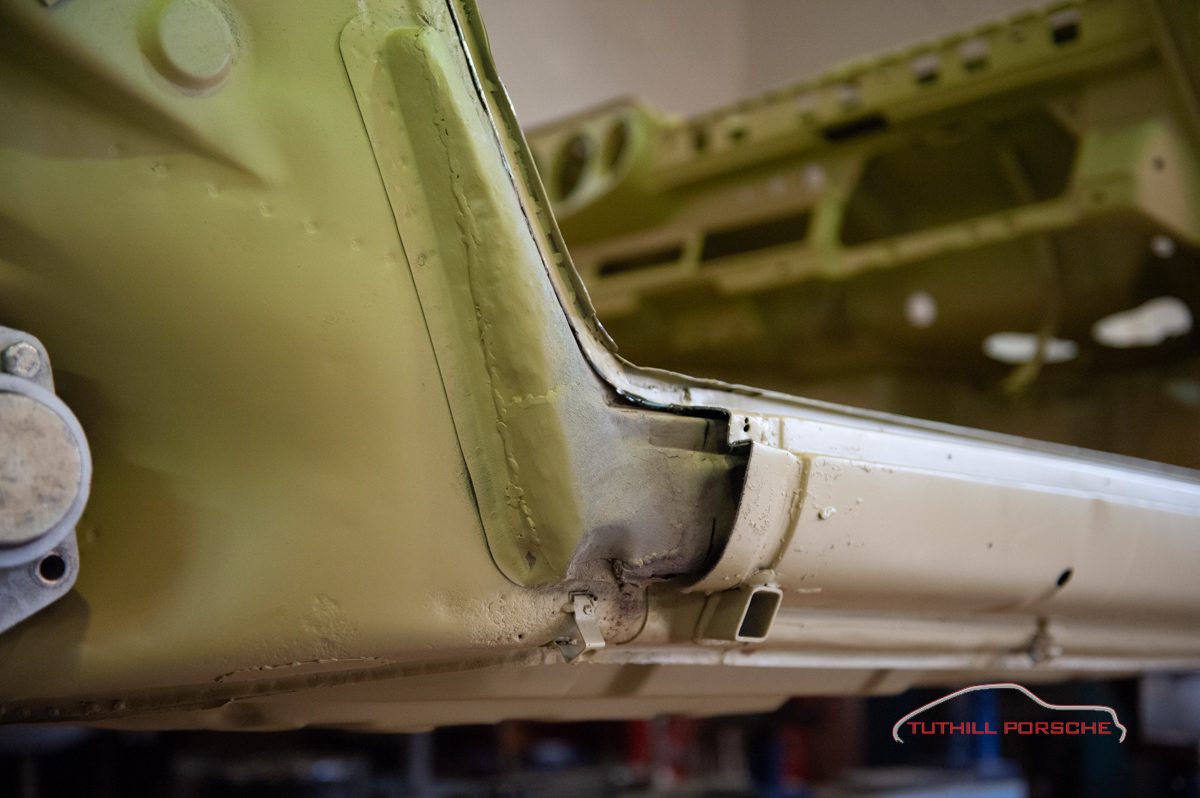
While this was a very original car, it had seen some repairs in the past, including untidy patches welded into the kidney bowl sections. These were removed and the car was repaired using new genuine parts. The list included lightweight Porsche doors and rear quarter panels, a genuine Porsche RS front bumper and aluminium framed ducktail. That was a rather expensive phone call!
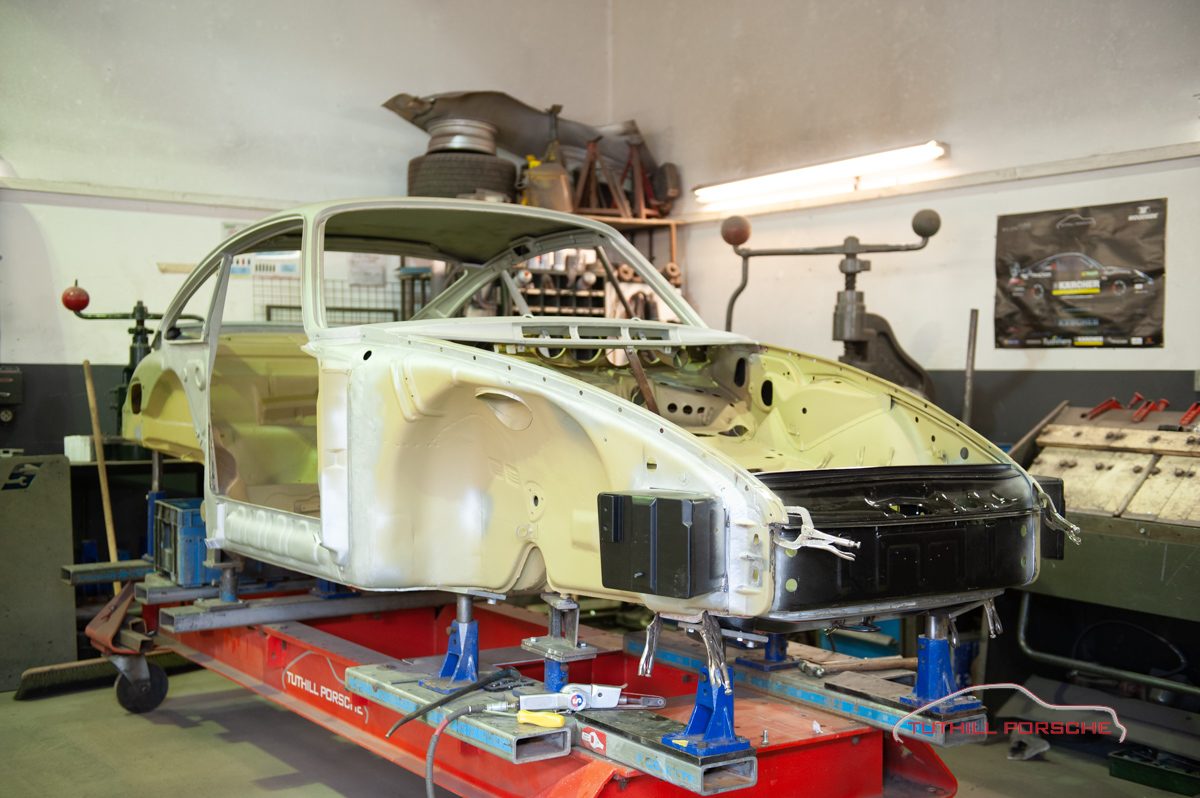
The roof section was unrepairable, so that was replaced with a donor section while the car was on the jig. The distorted dashboard was straightened and many other repairs were effected before the shell was finished. It was then put back on a rolling frame and sent to the bodyshop for preparation and paint.
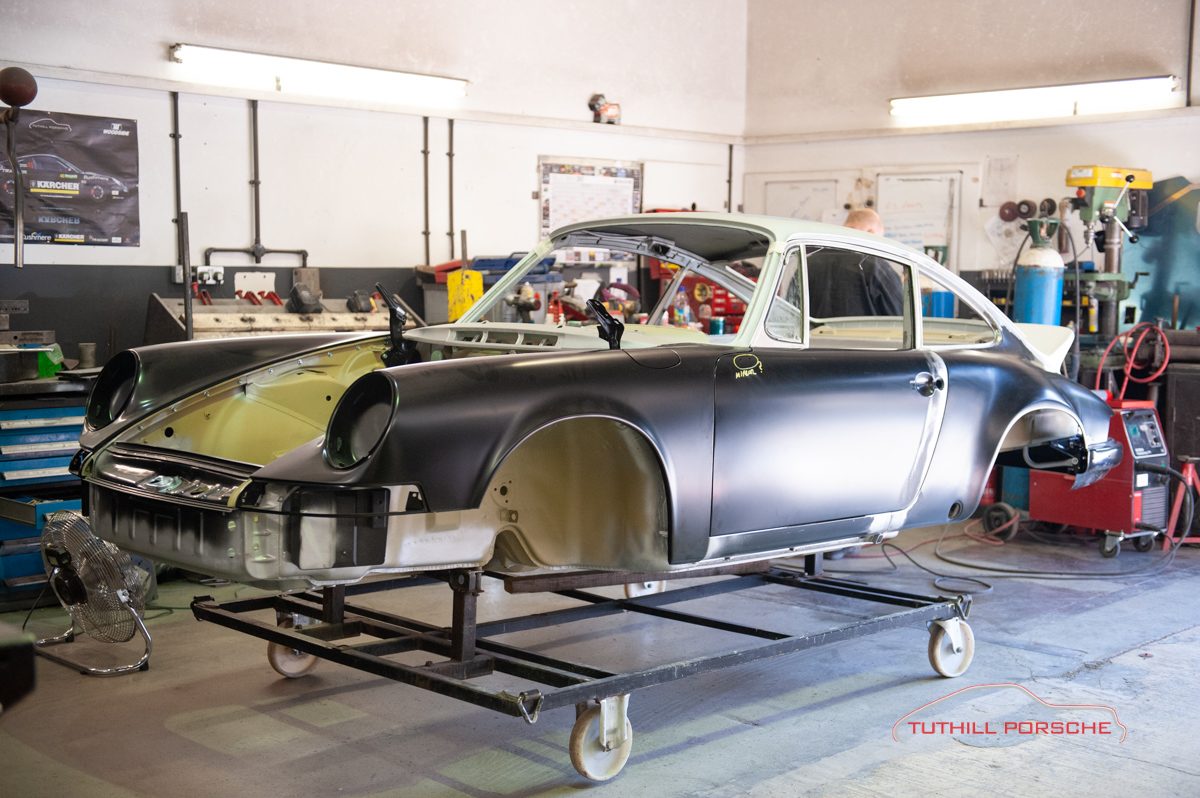
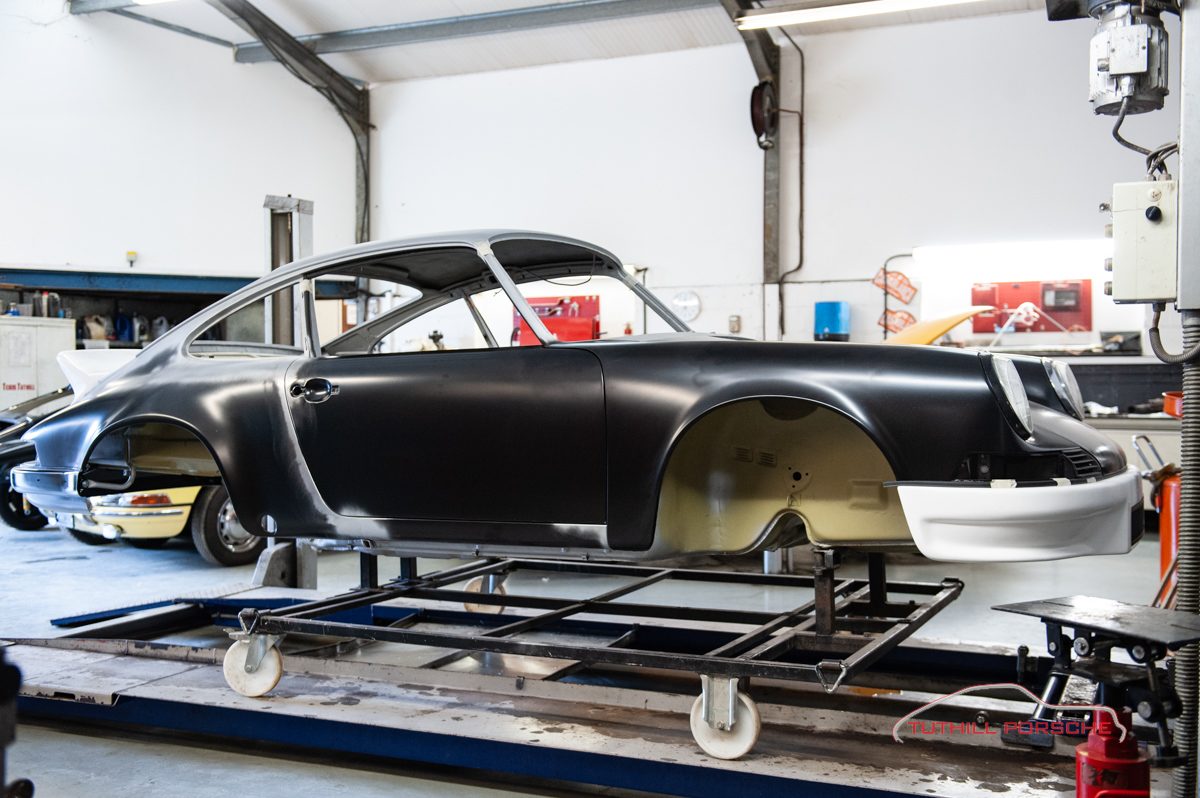
We brought in a respected RS expert to inspect our repairs. The chassis number was x-rayed and verified and the RS was noted as retaining its original shell. We took advice on some points: for example, making sure welds in certain areas were to the not-so aesthetic but authentic factory standard. Such small details are important when working with historic machines.
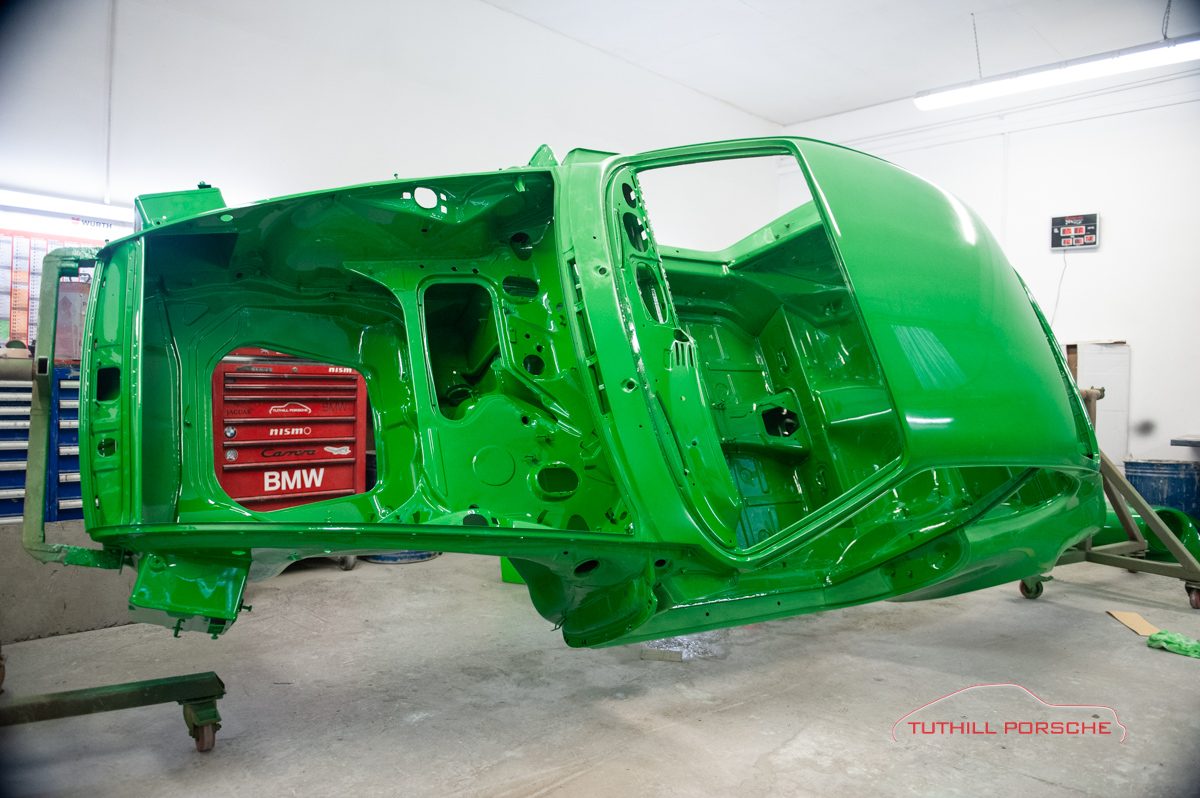
Shell preparation before paint on bare metal rebuilds takes two people several days to complete. The cars are rubbed down and cleaned numerous times before the painstaking process of sealing the many body seams can begin. We prime, stonechip and underseal, then add the top coat and then go back and paint in the black areas where the body shows through the lightweight carpet sets. The entire process can take up to three weeks.
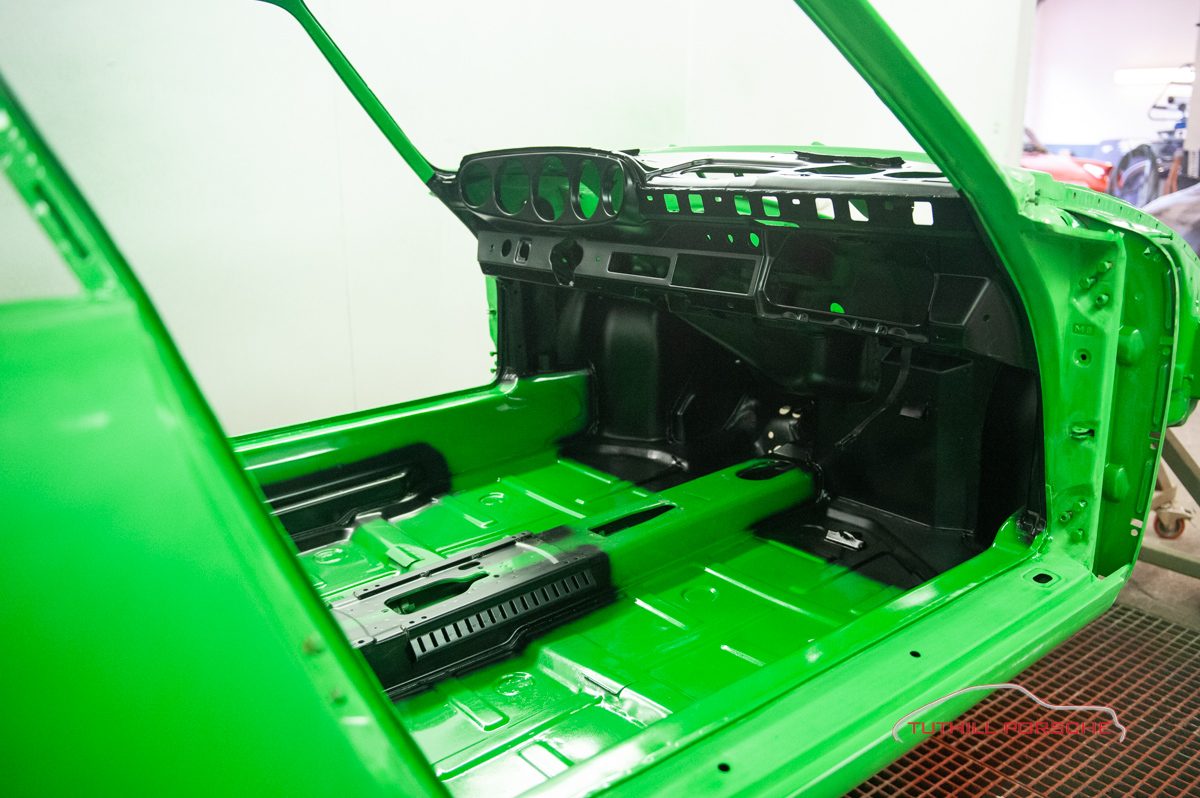
Once the shell was through paint, it was returned to the competition workshop, where the re-assembly process would get started. A substantial list of new parts was required including fusebox and wiring loom, full brake system, oil lines, lights and so much more.
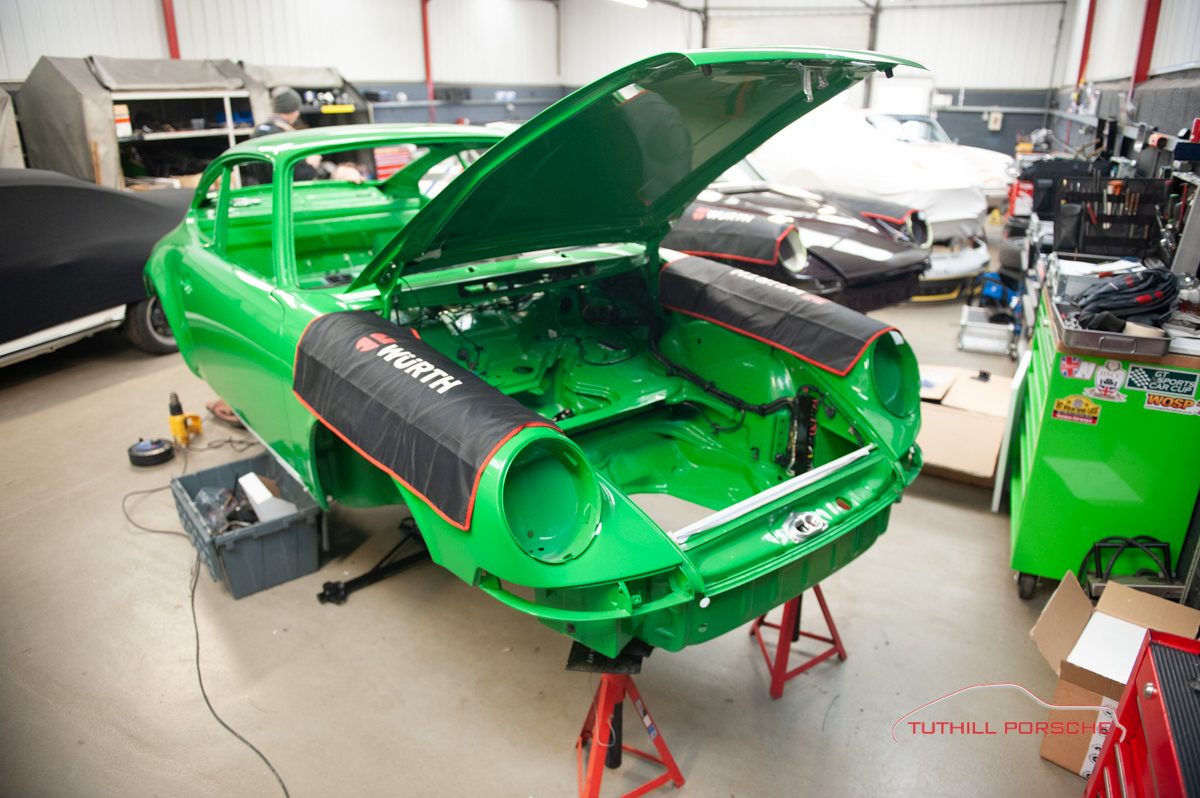
After many more weeks of undivided attention, including a re-trim and a full engine and transmission restoration, the project was complete. The car’s Italian owners are overjoyed with the finished result: another wonderful Porsche 911 preserved for the future and with a great story to tell.
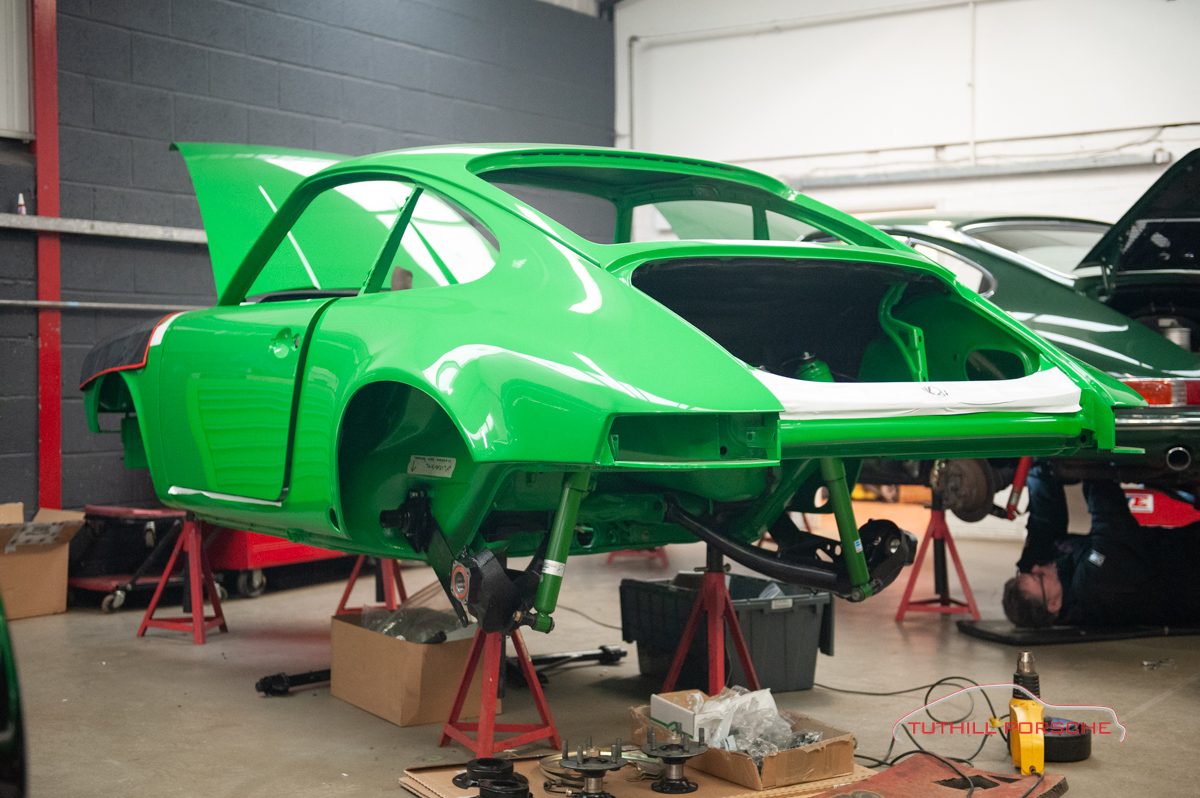
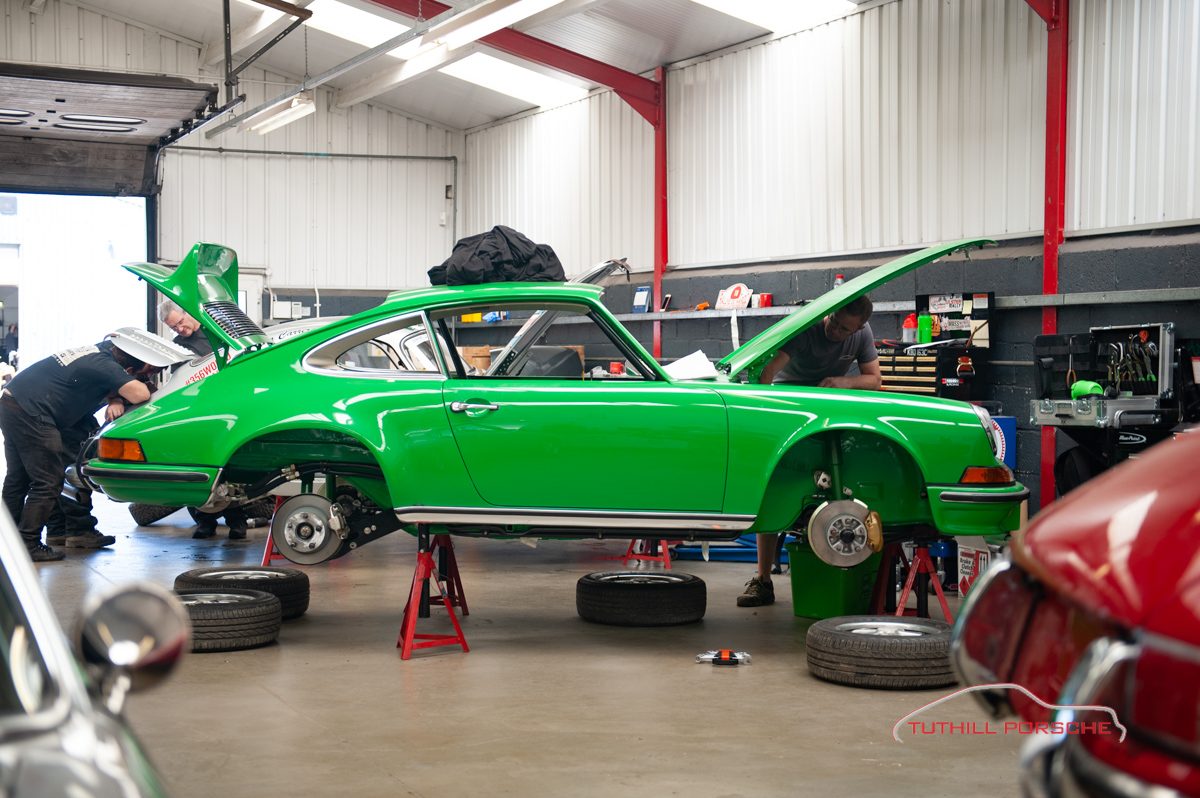
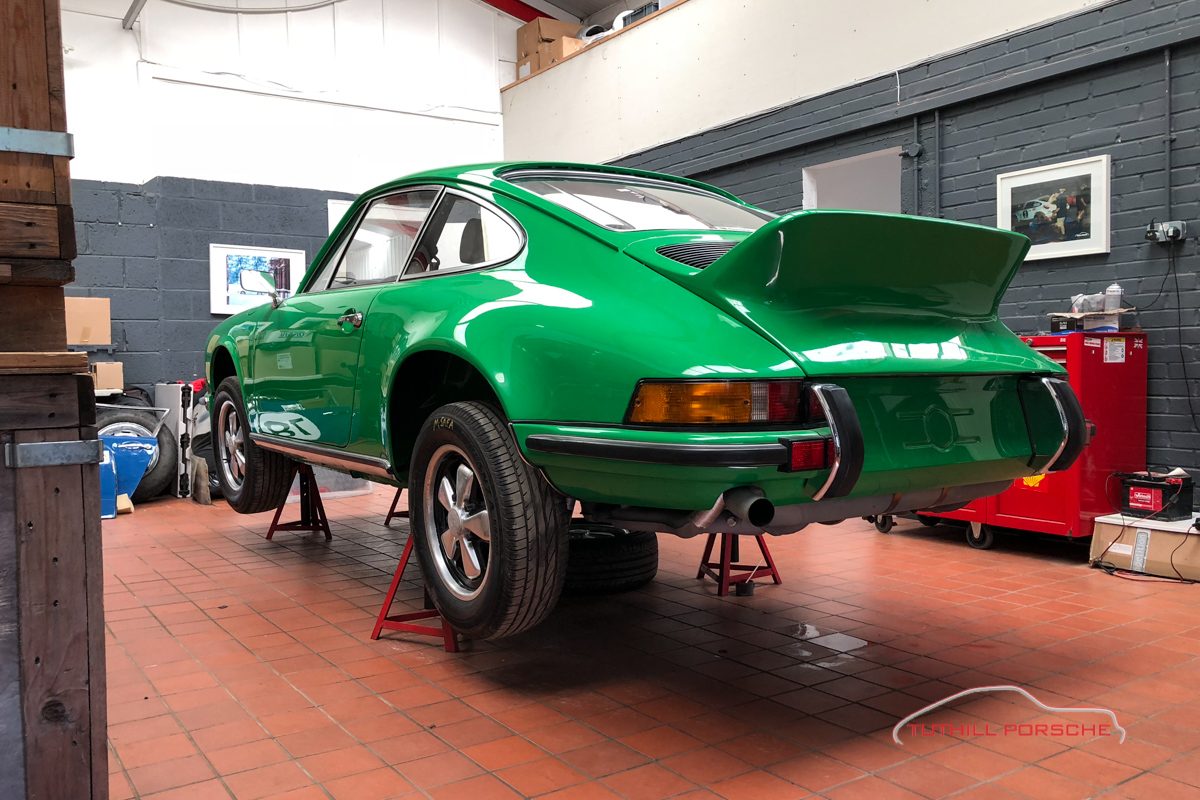
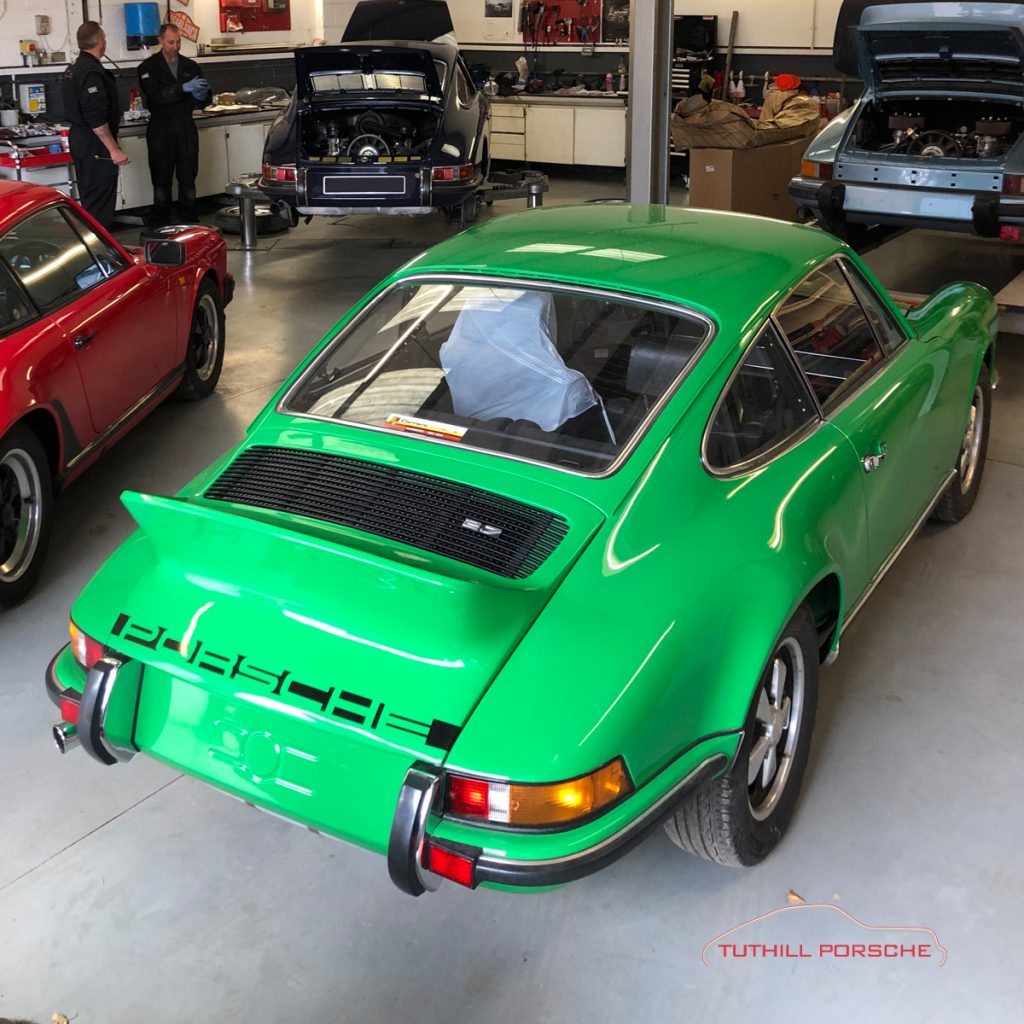
 Back to News
Back to News

